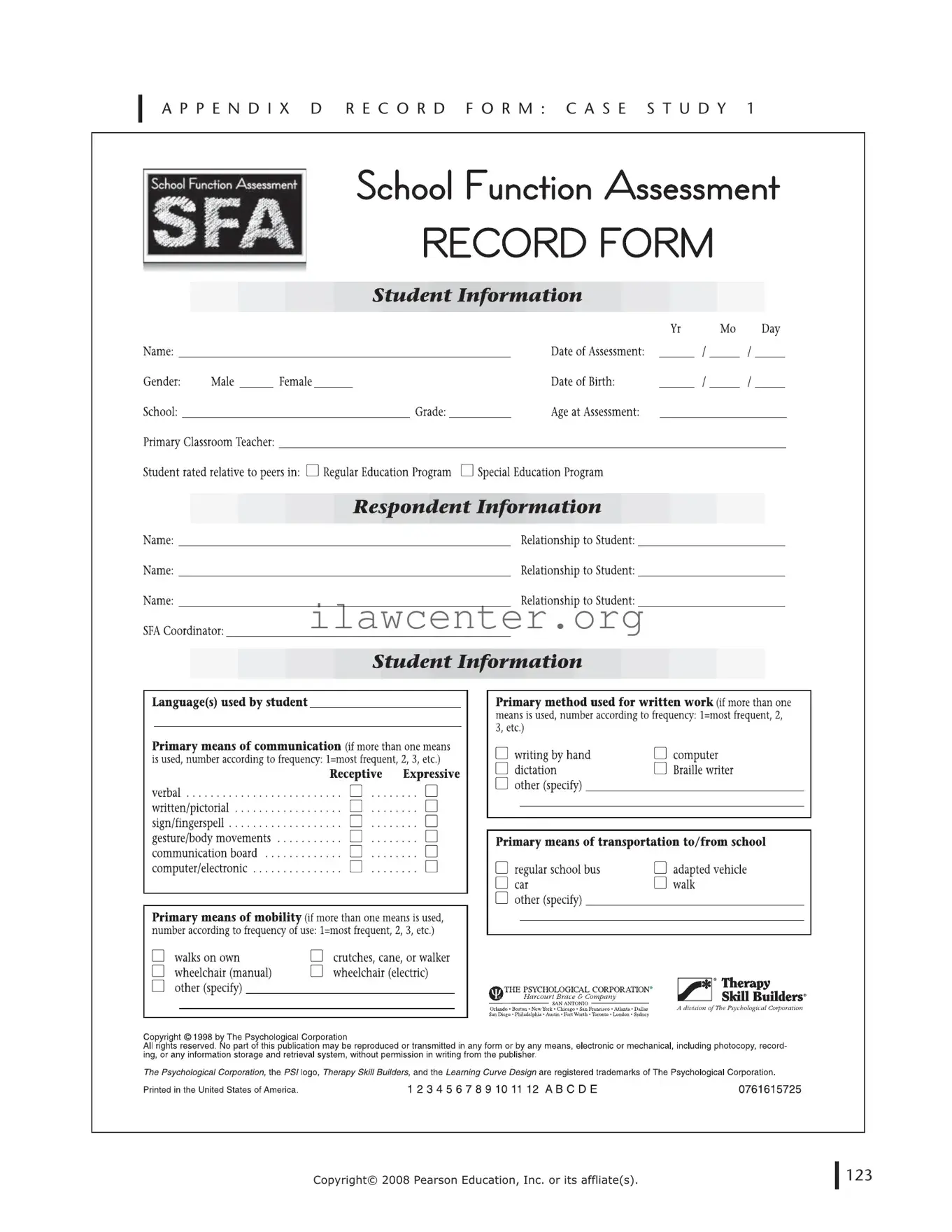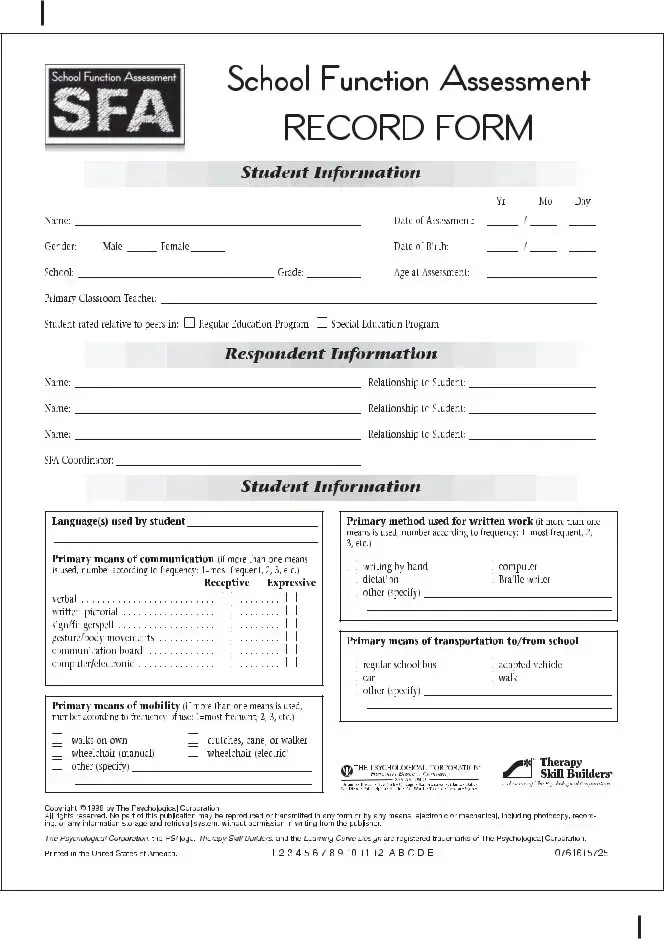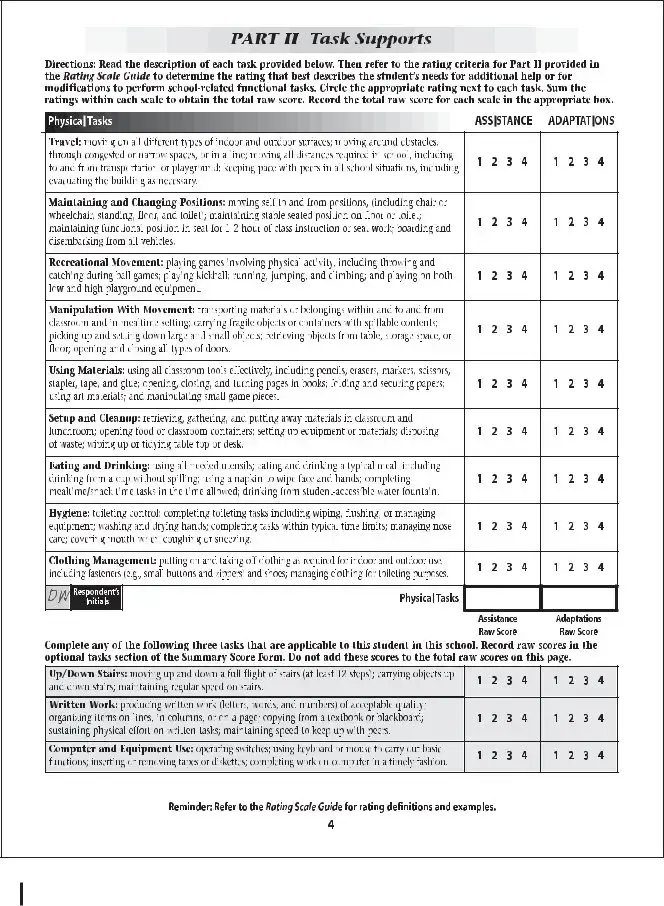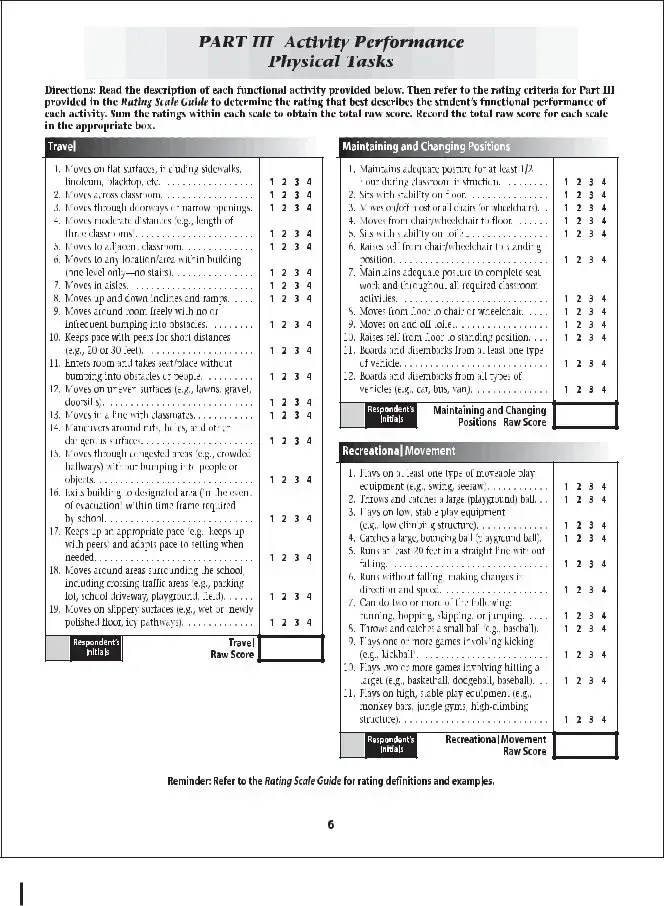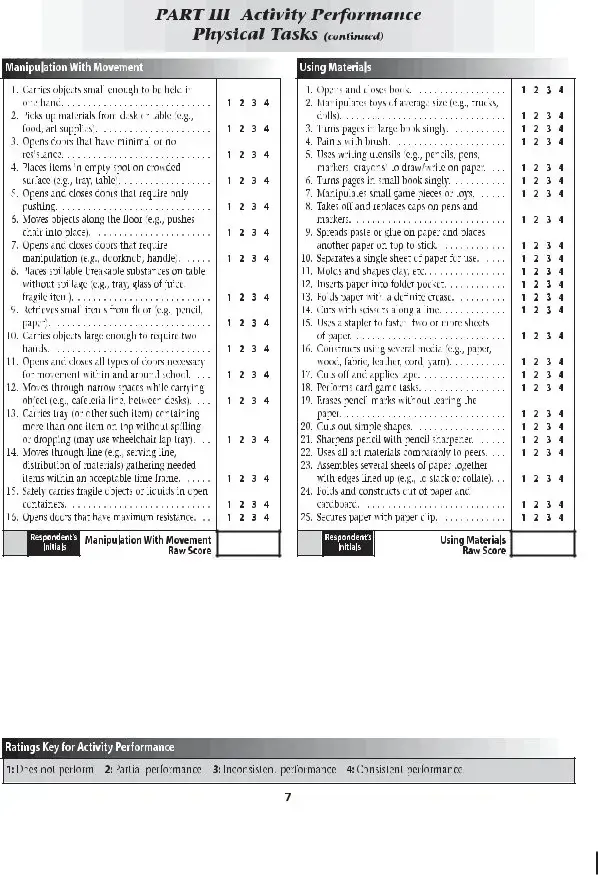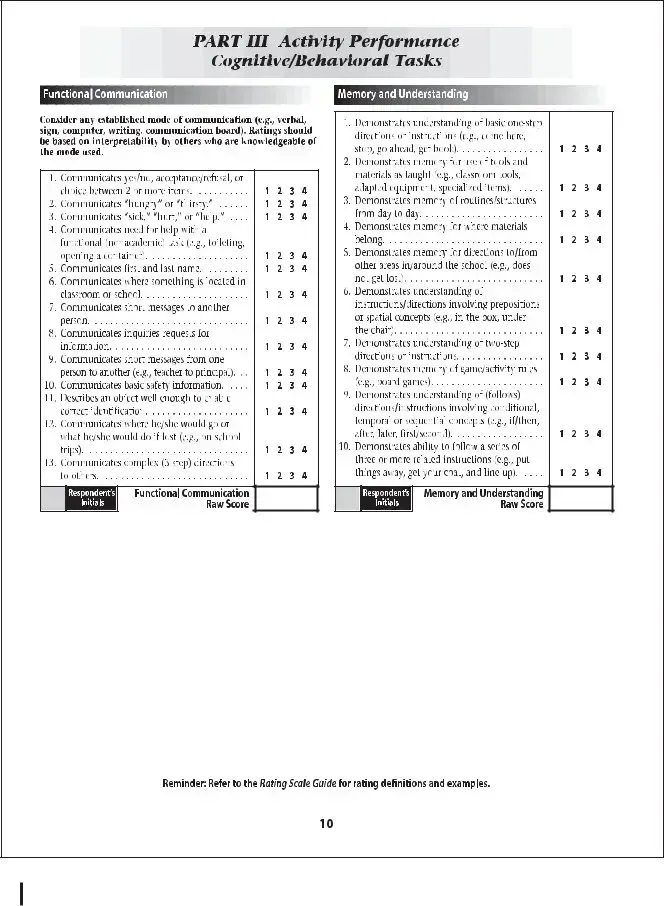What is the School Function Assessment form?
The School Function Assessment (SFA) form is designed to assess a student's functional abilities and needs in a school environment. This tool helps in identifying the supports a student may require to participate successfully in school activities. By focusing on tasks related to academic performance as well as social interactions, the SFA provides a holistic view of a student's functioning within the school setting.
Who can use the School Function Assessment form?
The SFA can be utilized by various professionals, including special education teachers, occupational therapists, and school psychologists. These individuals review and interpret the results to develop appropriate intervention strategies and supports tailored to the student's unique needs.
What information does the School Function Assessment gather?
The assessment gathers information related to a student's participation in school, including key areas like academic tasks, play, and self-care. It also evaluates the student’s performance in different environments, such as the classroom and playground, providing insight into both individual strengths and challenges.
How is the School Function Assessment administered?
The assessment is typically completed by professionals who work with the student, often through observations and discussions with the student, family members, and other educators. It involves rating various items related to the student’s performance, making it a collaborative and comprehensive assessment approach.
What are the benefits of using the School Function Assessment?
Using the SFA can lead to better understanding of a student’s functional abilities, which is critical for developing tailored educational interventions. The assessment results help in setting realistic goals, improving classroom participation, and facilitating effective communication between educators and parents regarding the student’s needs.
How often should the School Function Assessment be conducted?
It is generally recommended to conduct the SFA at regular intervals, such as at the beginning and end of a school year or when significant changes in the student’s life occur. This ongoing evaluation ensures that interventions remain relevant and effective in addressing evolving student needs.
Can the School Function Assessment be used for all students?
The SFA is particularly beneficial for students with disabilities or those who struggle with the functional demands of school. However, it can also provide insights for any student needing additional support. Its inclusive nature makes it a versatile tool for educators in various educational settings.
What should be done with the results of the School Function Assessment?
The results should be shared with the educational team that supports the student, including teachers, therapists, and families. This collaboration can lead to more effective educational plans and support strategies. Continuous monitoring of the student’s progress based on SFA findings helps to refine interventions and ensure they remain effective.
